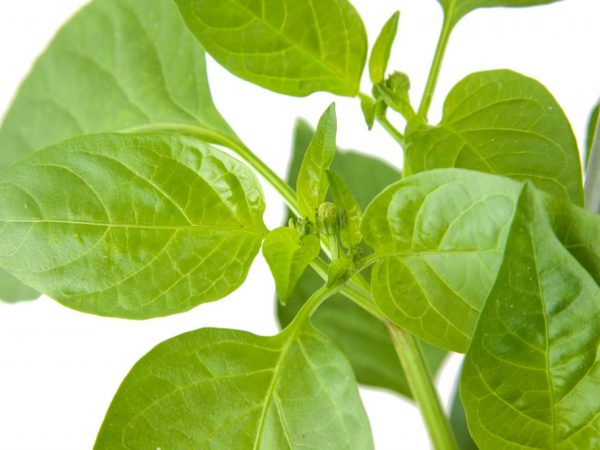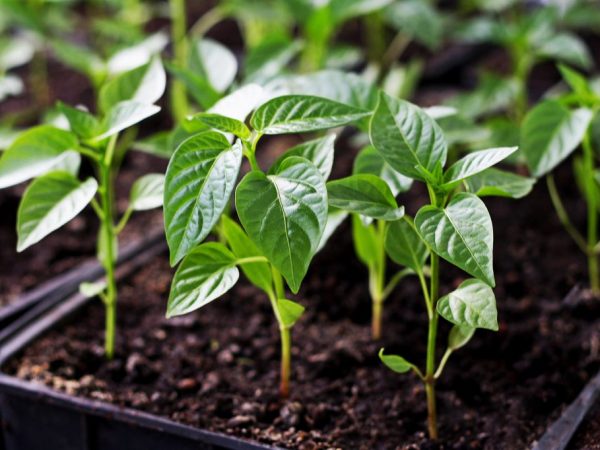Forming peppers in a polycarbonate greenhouse
There are several opinions about the formation of the crown of sweet peppers. Some believe that there is no point in doing pinching. This is true when it comes to varieties with a low growing crown. In other cases, the formation of pepper in a polycarbonate greenhouse is the key to increasing yields.

Forming peppers in a polycarbonate greenhouse
Why do I need a pinching procedure
The formation of a bush in a greenhouse is a fundamental factor in:
- ability to bear fruit;
- aging speed.
In central Russia and its northern regions, crop cultivation is possible in greenhouse conditions. In them, pinching of new ovaries allows you to keep the existing ones. Proper care of the pepper and the formation of a bush in the greenhouse allow you to redirect the strength of the plant to increase the fruit, or, conversely, to their number with a decrease in size.
Formation of different types
Growing a tall variety in greenhouse conditions is impossible without competent pruning of the crown and tying the branches to the trellis. Medium-sized varieties will be satisfied with pruning the lower tier of shoots and branches without ovaries. In this way, you can help the plant direct its forces towards the formation of fruits. The pepper will not waste juice on unpromising branches, and the ventilation of the crown will improve, which is the prevention of fungal diseases.
The need for pinching is determined by the height of the shrubs. The process of cutting peppers is carried out only on certain varieties, regardless of the place of growth.
- Early ripening varieties ripen already on the 100th day after the picking of the seedlings.
- Mid-season - 135 days.
- Late ripening - for 145-160 days.
Low-growing or dwarf species do not need crown agroformation. In low shrubs, unpromising shoots are rather weak and do not play a role in feeding the plant with nutrients. It is necessary to form a crown only when the seedlings are planted too tightly. A dense planting entails a compaction of the tops and slows down the development of plants.
The process of forming pepper bushes
Proper greenhouse maintenance and the formation of a greenhouse bush from a material such as polycarbonate are fundamental factors in obtaining a rich harvest. Stem formation depends not only on the type of pepper, but also on the microclimate in the greenhouse.
A crop grown in an open area or in an unheated room can reach 60 cm in height, in a heated room the height of the bushes is much larger and the fruits are larger.
In order to properly form a bush and not infect an infection, the tools are disinfected after each instance. Diseases are not always noticeable immediately. Pepper pruning is done only if the plants are healthy.
Pepper formation involves a variety of activities. It all starts with a schematic arrangement of the bushes.When the plants throw out the buds, the crown ovary or several lateral ones are removed. In the process of growth, excess shoots and leaves are removed. When the crown is formed and the required number of ovaries remains, the skeletal branches are pinched to provide the fruits with the necessary nutrition.
Schematic arrangement of seedlings
The planting pattern is shown in the seed advisory sheet. The scheme depends on the highest height that the bush is able to reach. The location of the pepper plantations is determined in advance. So, the undersized variety does not have to be cut if the planting is done in accordance with all the rules.
Planting scheme, depending on the variety:
- undersized specimens are located at a distance of 20-30 cm from each other, per 1 sq. m there are about 7 bushes;
- medium-sized and tall specimens are placed at a distance of 35-40 cm, per 1 sq. m will have about 5 bushes.

Seedlings need sunlight
For all types of pepper, a distance between rows of 60 cm is left in order to have free access to the plants at any time. There is another landing scheme, called square-nested. It is versatile and suitable for all types. With this arrangement, a 60x60 cm hole is dug in the soil.Two plants are placed in it at once.
Planting is carried out in compost-fertilized soil. The seeds are sown in a common pot in March. The soil for germination must be fertilized with organic matter. When the sprouts have 3 full-fledged leaves, they can be dived into separate peat containers.
Seedlings are supplemented as well as possible for about 12 hours a day. At the end of the seedling period, the sprouts dive into the greenhouse, observing the placement scheme.
Removing buds and pinching
The crown ovary is a kidney that forms at the initial fork on the main trunk. The pepper has only a main trunk, branches when it reaches a height of 20 cm, depending on the variety. When branching begins, the crown bud is immediately pruned. This move improves the nutrition of the kidneys above the fork. The first pruning is done when the stem is 15 cm tall.
They begin to form a bush as early as possible, during the development of the stem. Side shoots appear on it. They remove not only unnecessary shoots, but also some of the flowers. All shoots that form in the axils of the leaves are called stepchildren. They should be removed.
2-3 shoots are left on the initial stem. The strongest are left, released from the fork, after removing the crown bud. These will be shoots of the first order, which are also called skeletal. Each skeletal branch has its own shoots, which also pinch. All procedures are carried out according to the same principle: strong thick shoots are left, weak ones are removed.
To get large fruits, 15 to 25 ovaries are left on the bushes, depending on the variety. When the shoot is removed, 1 leaf is left on the stem: it is he who provides the nutrition for the ovary.
Pruning leaves and shoots
The main stem releases leaves and shoots below the pinching point. They are removed immediately. Remove foliage that obscures the light of the ovaries and consumes excess juices. The bush is constantly inspected for damaged, unhealthy leaves. They are also removed.
When the first batch of fruits reaches technical ripeness, the leaves are removed under the bushes. Remove no more than 2 at a time. We do this with all the fruits. Closer to the end of the season, no later than 45 days before the full harvest, the pinching is stopped. It is strictly forbidden to remove all the leaves at once, otherwise the bush will die.
Formation of the skeletal part
If everything is done correctly and the right amount of fruits remains on the bush, they take care of their nutrition. To begin with, kidney formation is stopped. This move allows you to rationally distribute the strength of the plant.
The last pruning is carried out 45 days before the harvest is complete. All the tops of the skeletal branches are cut off.At this moment, the active formation and ripening of fruits occurs. Pinching the growth points of skeletal branches allows you to direct the juices to provide nutrients to the already existing fruits.
Recommendations for the formation
If several coronary ovaries appear on the main stem, they are all removed. If this is not done, the bush will grow poorly.
When grown in a heated polycarbonate greenhouse, plants have a longer growing season — you have to work harder and cut off all the leaves thrown out by the main stem.
If the bush is struck by white, bacterial or gray rot, it is prohibited to carry out pinching: this will only harm the plant.
With high humidity in the greenhouse, it is imperative to remove the lower leaves even from low-growing varieties of pepper.
It is recommended to form the bush into 2 stems. This allows you to get the optimal number of skeletal branches, the fruits on which can harden well.
Be sure to tie up tall specimens.
Conclusion
Timely pinching of pepper crops and proper care helps to achieve good yields, regardless of where it grows. The purpose of the procedure is to thin out the tops, increase the efficiency of the plant, increase productivity, and protect against fungal diseases. Prepare the tool in advance, sharpen it, disinfect it. Bushes are examined for disease. After each bush, additional disinfection of the instruments is mandatory.


